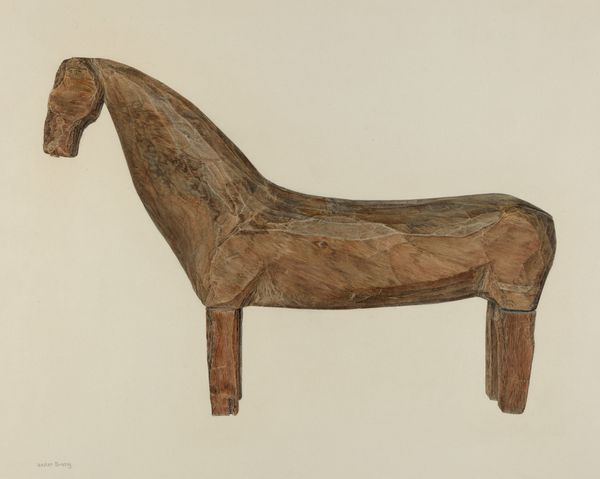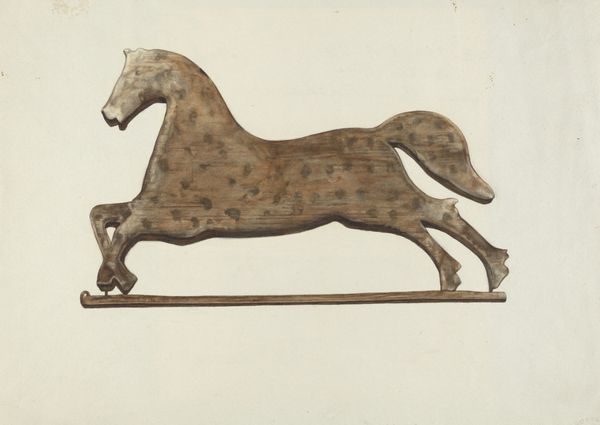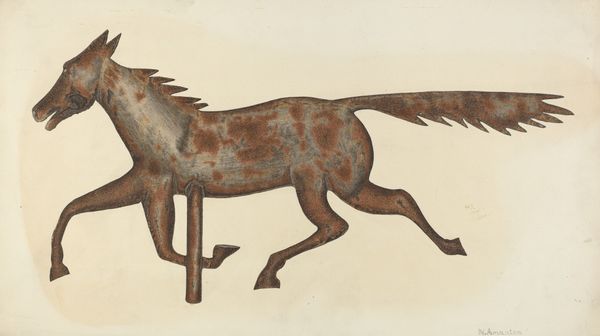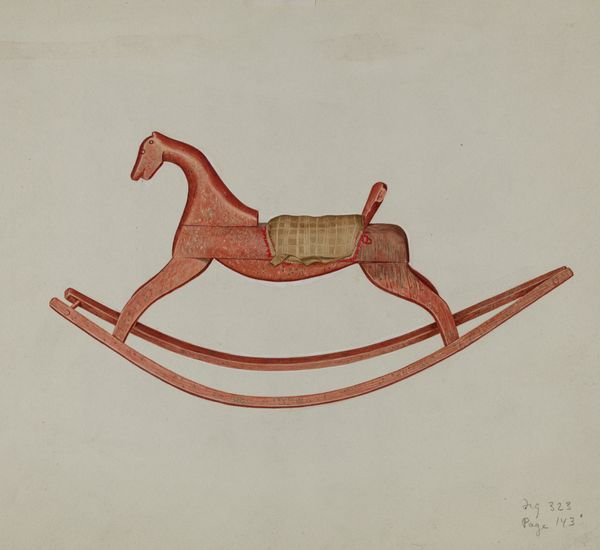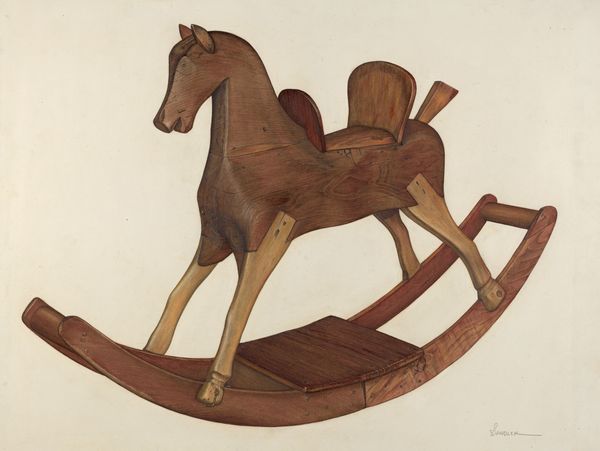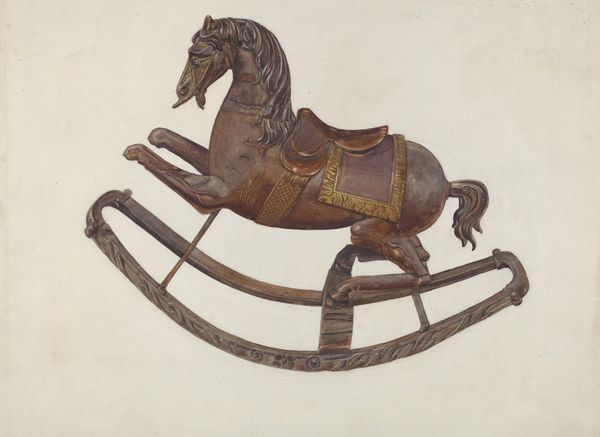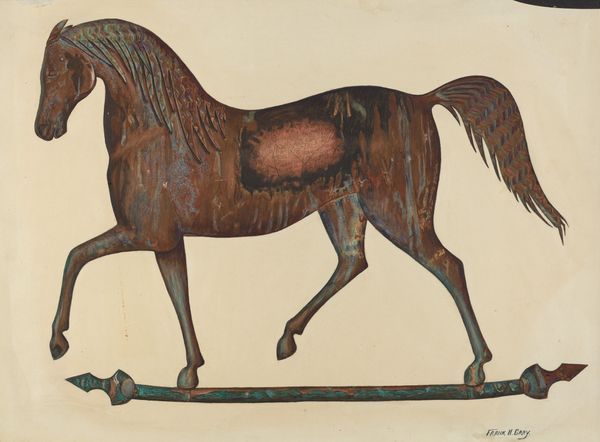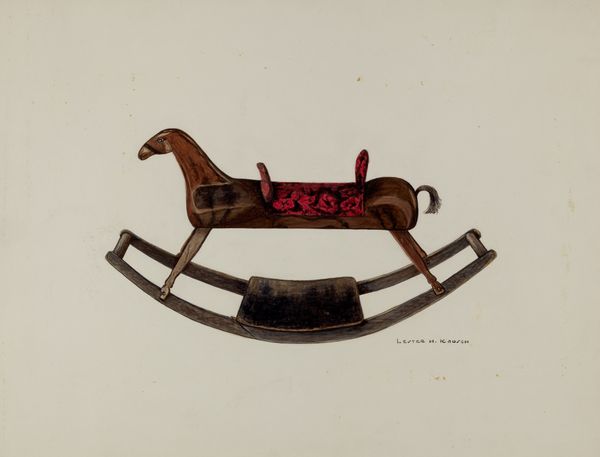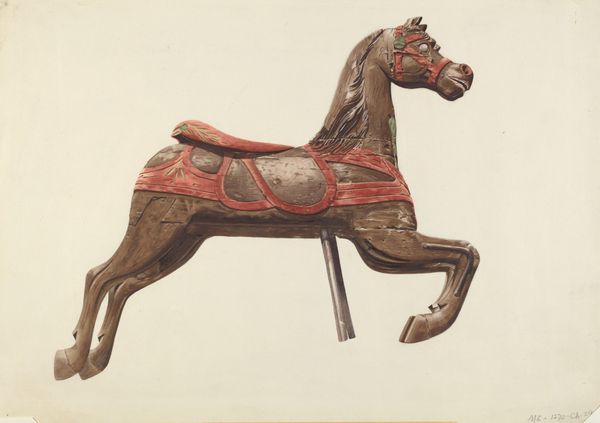
drawing, coloured-pencil, sculpture, wood
#
drawing
#
coloured-pencil
#
sculpture
#
landscape
#
coloured pencil
#
sculpture
#
wood
#
watercolor
Dimensions: overall: 38.2 x 54.5 cm (15 1/16 x 21 7/16 in.) Original IAD Object: 50" long
Copyright: National Gallery of Art: CC0 1.0
Editor: This drawing from around 1939 by Harriette Gale depicts a rocking horse. It’s rendered with coloured pencils and I'm struck by how detailed the wood grain is. It looks worn, like a much-loved toy. What stands out to you in this piece? Curator: It’s precisely that emphasis on materiality that grabs my attention. The representation focuses intently on the production and wear of this object. We’re not just looking at a drawing of a toy, but at a carefully rendered depiction of labor, consumption and the lives of both. Gale calls our attention to how everyday items carry immense cultural and personal value. Have you considered the socio-economic context? Editor: Not really. It just seemed like a sentimental image. Curator: Think about the 1930s: The Great Depression. Did many families have access to a lovingly crafted toy? Or might something like this, either handmade or carefully preserved, carry even greater significance because of material scarcity? Gale’s focus on the rocking horse’s worn surface emphasizes its history and enduring use, offering insight into resourcefulness during challenging times. How does understanding the material context change how you view the work now? Editor: I see it differently now. The focus on the object itself makes me think about who owned it, who made it, and how its existence spoke to their reality. Curator: Exactly! And what we call craft or children’s art deserve careful consideration with artistic media like coloured pencil used to explore its impact, labor, and material conditions, breaking down traditional hierarchies in art. Editor: I guess I had a very narrow understanding of how much these materials and the way an artist uses them matters to interpreting a work like this. I never really considered it this way. Thanks for making me see the value in this piece, not just its sentiment.
Comments
No comments
Be the first to comment and join the conversation on the ultimate creative platform.
